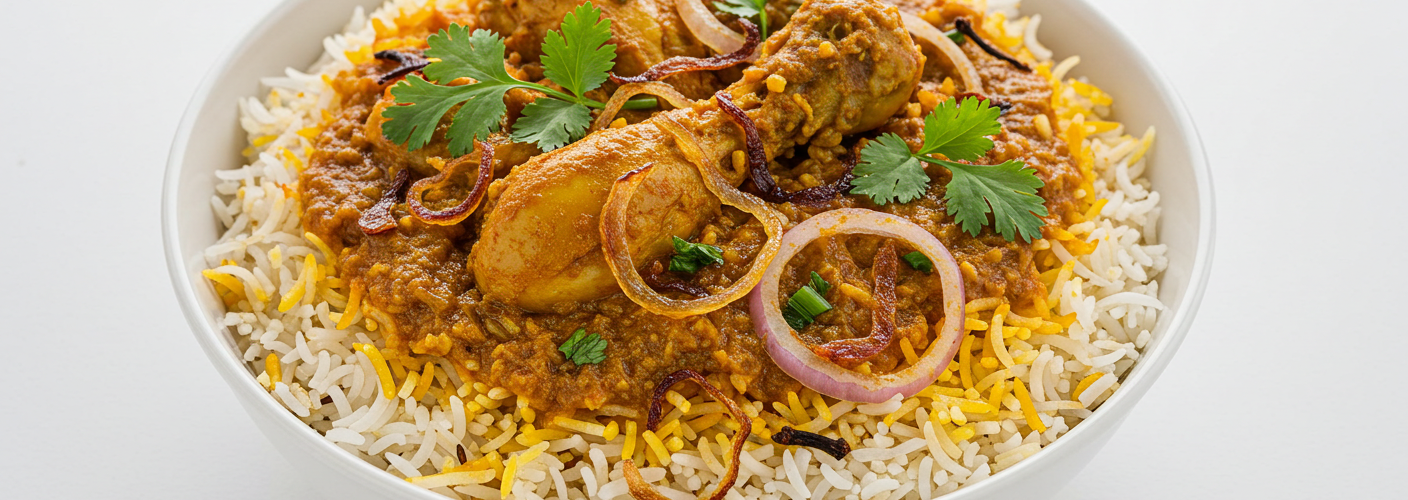Biryani is more than just a dish; it is an experience steeped in history and flavor that has captivated the taste buds of millions around the globe. Originating from the Indian subcontinent, biryani has evolved into various regional variations—each a testament to the rich cultural tapestry of the area. At its core, biryani is a fragrant rice and curry dish, often prepared with a tantalizing blend of spices, meat, and sometimes vegetables, creating a celebration of flavors in every mouthful.
The Essence of Biryani
At the heart of biryani lies basmati rice, known for its slender grains and aromatic qualities. This rice is usually cooked separately to ensure that it retains its fluffy texture while absorbing all the flavors from the accompanying curry. The curry component of biryani often consists of marinated meat, such as chicken, mutton, or beef, cooked in yogurt and a medley of spices like cumin, coriander, and garam masala. Vegetarian versions substitute meat with a variety of colorful vegetables, lentils, or paneer to satisfy diverse palates.
One of the keys to perfect biryani lies in the layering technique. The meat or vegetable curry is typically layered with the rice, allowing each component to meld together during the final cooking stage. This layering method not only enhances flavor but also creates a beautiful presentation, making biryani a feast for the eyes and the taste buds alike.
Regional Variations
Biryani has numerous regional adaptations, each with its unique twist. For instance:
- Hyderabadi Biryani: Famous for its bold flavors, this variation often includes saffron, boiled eggs, and fried onions, lending it a rich aroma and a complex taste.
- Lucknowi (Awadhi) Biryani: Known for its subtle flavors and aroma, this version involves a slower cooking process, where the meat is ‘dum’ cooked (steam-cooked) in a sealed pot, allowing the flavors to meld beautifully.
- Kolkata Biryani: Infused with potatoes, this version tells a story of the rich cultural and historical influences of the region, presenting a delightful twist that has become a local favorite.
- Malabar Biryani: Known for its simplicity and the use of local spices, this biryani shines with the fresh flavors of coconut, making it distinctly different from its northern counterparts.
The Perfect Accompaniments
To complete a biryani meal, it’s common to serve it with accompaniments that elevate the experience. Raita—yogurt mixed with onions, cucumbers, or mint—is a popular side that balances the spices while cooling the palate. A spicy side salad or boiled eggs often accompany the dish, enhancing its richness. For a truly authentic experience, serve biryani with a tangy pickle or a refreshing mint chutney.
Conclusion
Biryani is not just a meal; it’s a celebration—a dish that brings people together, often served during festive occasions and family gatherings. Its intricate preparation, aromatic spices, and rich flavors tell tales of diverse cultures and traditions. Whether you’re indulging in a traditional family recipe or exploring a new variation in a trendy restaurant, biryani promises a sensory journey that is sure to tantalize your taste buds.
So, the next time you crave a dish that showcases the essence of culinary artistry, look no further than biryani—a delightful fusion of rice and curry that continues to reign supreme in kitchens around the world.




Add comment